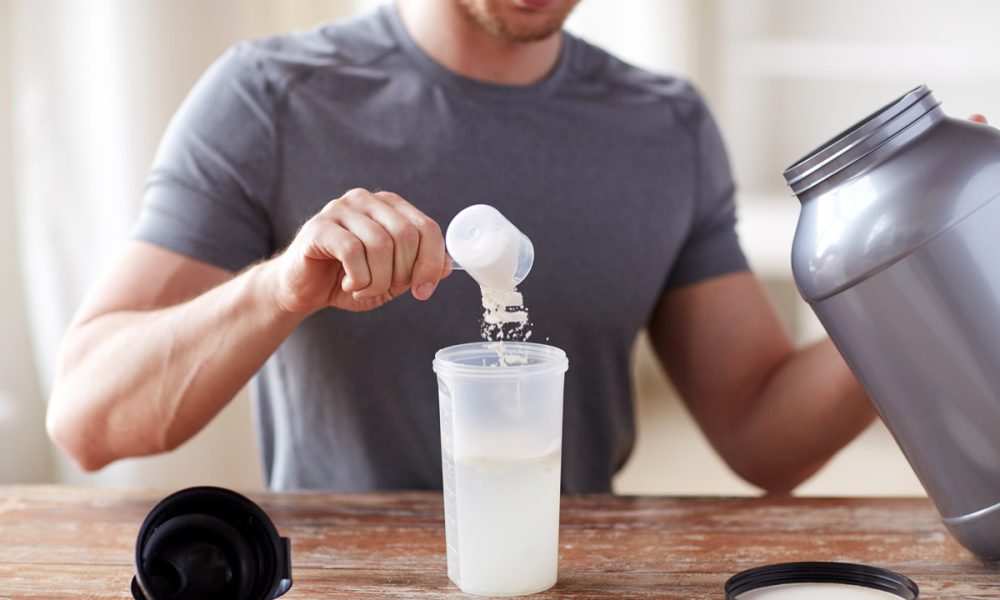10 of the best men’s sweaters for Fall 25
Sep 5, 2025Protein is an essential macronutrient, and it plays many important roles in the body. Getting enough high-quality protein in your diet is important for building and maintaining muscle mass, supporting weight loss, boosting metabolism, and optimizing overall health. However, many people struggle to eat adequate amounts of protein on a daily basis. Use these seven tips to help ensure you meet your daily protein needs.
Eat Protein with Every Meal and Snack
Make an effort to include a good protein source at breakfast, lunch, dinner and your snacks throughout the day. Some easy options for breakfast include eggs, Greek yogurt, cottage cheese, protein oatmeal or a protein smoothie. Lunch and dinner can contain lean meats, fish, beans, tofu, or tempeh. Snacks like nuts, seeds, jerky, protein bars and shakes are also great for an afternoon or evening pick-me-up. Distributing your protein intake evenly throughout the day helps your body utilize it most effectively for muscle building and repair.
Load Up on High Protein Foods
Certain foods are exceptionally high in protein, making them nutrition powerhouses. Making these high protein foods a regular part of your diet ensures it’s easy to meet your daily protein goals. Great options include lean meats like chicken, turkey, lean beef and pork; fish, like tuna, salmon and cod; eggs; Greek yogurt and cottage cheese; edamame, lentils, chickpeas, beans, quinoa; nuts like almonds and walnuts; seeds like hemp, chia and flax; and low-fat milk.
Choose Protein-Rich Versions of Foods You Already Eat
An easy way to pack more protein into your diet is to switch out commonly eaten foods for higher protein versions. For example, opt for Greek yogurt instead of regular yogurt, choose quinoa over white rice, eat edamame rather than green peas, and select oats or cereal with added protein instead of plain varieties. Some easy food swaps can make a big difference in your daily protein intake.
Add Extra Protein to Mixed Dishes
When making mixed dishes like oatmeal, soups, stews, chilis, curries and casseroles, increase the protein content by adding beans, lentils, edamame, tofu, eggs, plain Greek yogurt, nuts, seeds, shredded chicken or extra lean ground meat. Adding these protein-rich ingredients to a single recipe substantially bumps up the protein in just one serving. Get creative with recipes to easily incorporate more protein.
Supplement with Protein Powder
Whey and plant-based protein powders offer an easy, convenient way to help meet your daily protein needs. Simply add a scoop to smoothies, oatmeal, yogurt, baked goods and more to give your protein intake a boost. Whey protein from grass-fed cows is highly bioavailable and absorbed quickly by the body. Transparent Labs offers a great grass fed whey protein option.
Focus on Protein Quality
Prioritize high-quality protein sources like eggs, lean poultry, fish, dairy, and legumes in your diet. These foods provide all the essential amino acids your body requires. Lower quality proteins like grains and some veggies lack certain essential amino acids, so they shouldn’t make up the bulk of your intake. Eat a variety of complete, high-quality proteins.
Read Nutrition Labels
Get in the habit of reading nutrition labels to determine the protein content per serving of packaged foods. Compare similar food items and choose the options higher in protein when possible. Seek at least 5-10 grams of protein per serving from foods like yogurt, cereal, bars, bread and canned tuna. Let the nutrition labels guide your higher protein choices.
Following a high protein diet provides many benefits including preserving muscle mass, accelerating fat loss, boosting satiety, and optimizing overall health. Use these simple yet effective diet tips to ensure you eat adequate amounts of protein from a variety of quality sources each day. With proper planning and preparation, getting enough protein in your diet is totally achievable.








